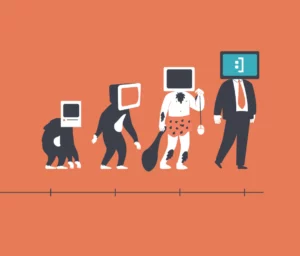In today’s fast-paced business world, buzz words like digital transformation, cloud, big data, analytics and more have permeated the social fabric. However, those words not only have meaning—they have real-world consequences that are plaguing organizations globally.

You see, for every buzzword and industry-related jargon-of-the-day there lies just under the surface a world of very real and very pressing technologies—ones that most IT departments struggle with daily. Whether it be implementing micro-services, containerization, or cloud enablement initiatives—these technologies are now the basis for the modern landscape of business success. But with legacy architectures standing in the way of mission-critical integrations and interoperability, it’s clear that these out-of-date silos fail to meet the modern standard.
For IT departments that are left struggling to integrate and operationalize—battling these aforementioned outdated, legacy architectures—they must first come to the harsh realization that technical debt cannot be an excuse. Yes, we have all heard the arguments. It’s too much money wrapped up in current systems, too difficult to climb out of the financial hole, and too difficult and expensive to move to new systems when the current ones aren’t that old. Honestly, I’ve seen people rationalize getting rid of family heirlooms faster than they do aging technical infrastructure.
All jokes aside, being shackled by this aging technology is a recipe for disaster. For every day that goes by, a competitor is throwing aside the “old” and moving rapidly forward with the “new.” This means better and more advanced products, translating to faster time-to-market, all resulting in far greater market acquisition. Better yet, these same companies are providing a customer experience that will be even more difficult to battle as a competitor. In short, with amazing customer experiences come life-long customers.
So how do companies get out of the vicious cycle of debt and excuses? The fastest, best and most accurate way: engage with the experts. And before you think this is a shameless plug for my own company, I assure you it’s not. It’s actually the reality of the world that we all now live in.
Enterprises are not known for being overly nimble—and that’s okay. But again, that too is not an excuse. Knowing that an entire business sector now exists, built on the premise to accelerate innovation, is where every struggling company needs to start.This means engaging with experts that can quickly identify the root of organizations’ technical debt problems by evaluating current architectures and hybrid infrastructure requirements, and planning and executing the adoption of modern technologies and goals—all while alleviating financial constraints.
Better yet, these same professionals can also help reallocate budgets for improved outcomes in other divisions within the organization. In fact, throughout my years of doing this professionally, it’s amazing to see how much budget suddenly appears from the depths of despair when you launch new technologies to fix old challenges; and when you calculate financials based on new metrics such as time lost or wasted high-budget talent plagued with menial tasks (instead of doing what they were paid to do).
There is a whole new way of doing business. There is a whole new way of solving business challenges. Luckily, there are companies like ours that represent the way forward to success.
And as a challenge to readers, would you like to re-calculate your technical debt? Reach out—we’ll solve it for you.
Transform Workflows into 24/7 AI Engines
Let Agentic AI Automation take the wheel—boosting speed, accuracy, and ROI at scale.



